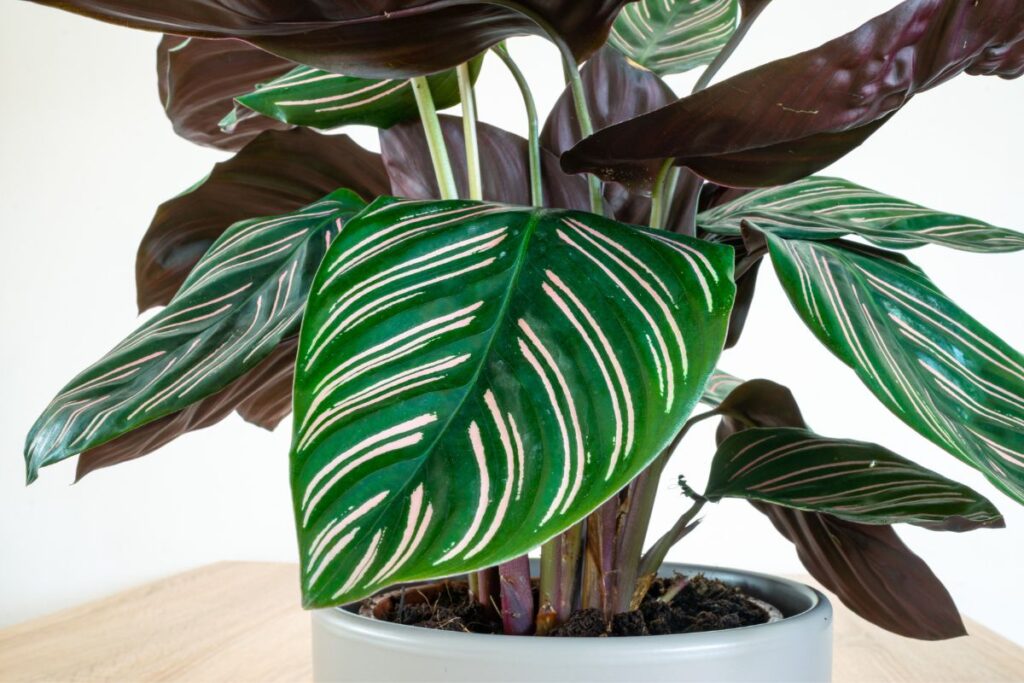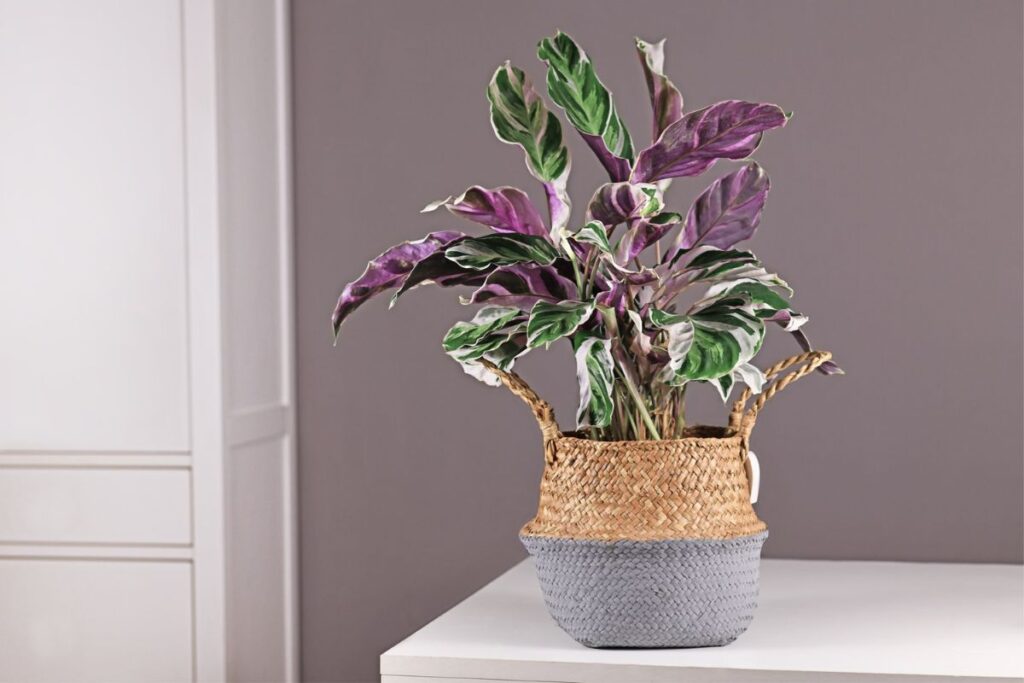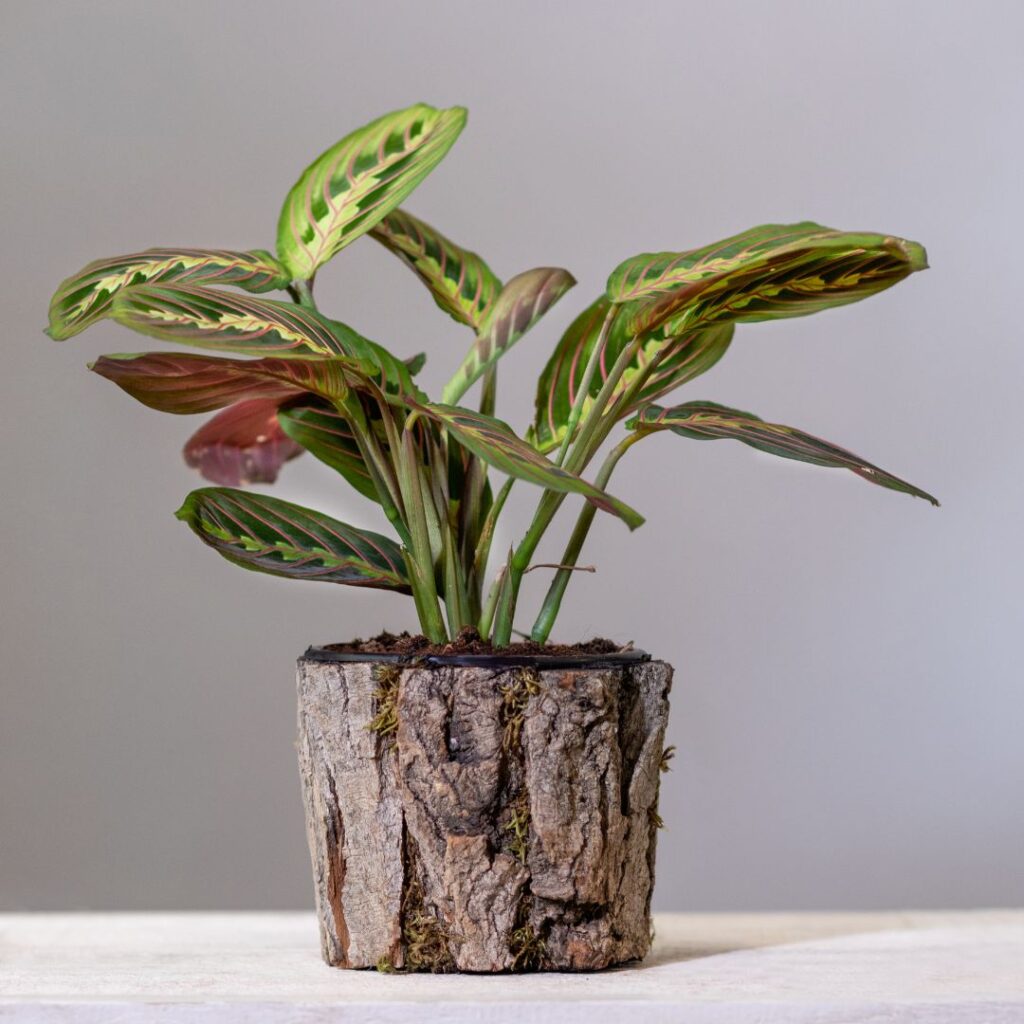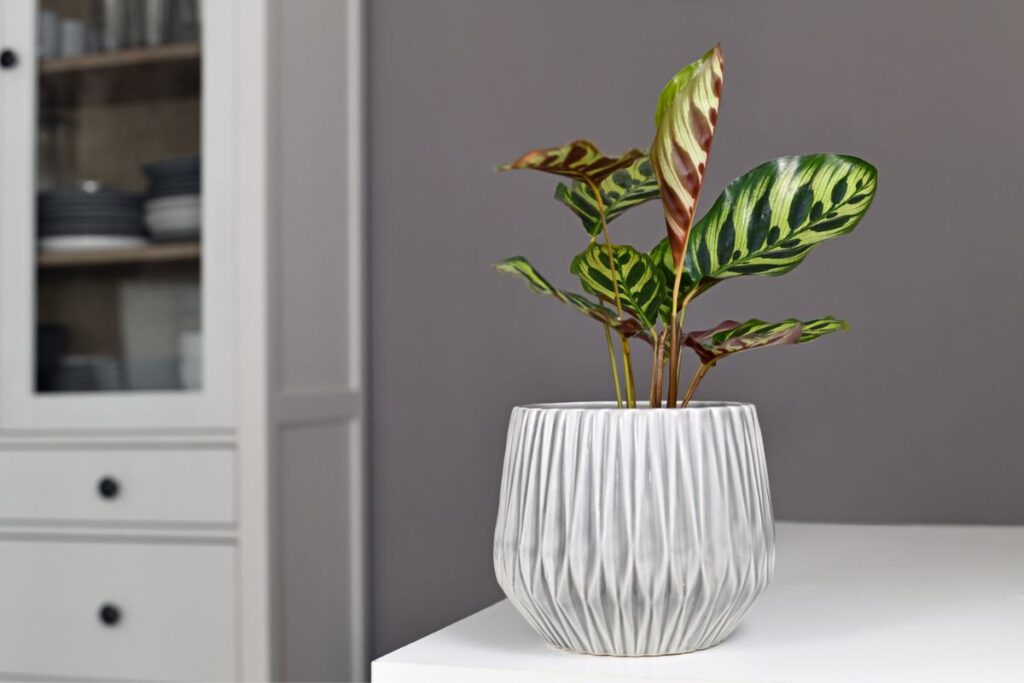Do you ever wonder why they are called prayer plants? These unique houseplants, known for their striking foliage and mesmerizing leaf movements, have a fascinating history behind their name. In this article, we will explore the origins of the term “prayer plant” and unravel the mystery surrounding these captivating botanical wonders.

Contents
Why are they called prayer plants?
Do you want to know why they’re called prayer plants? Well, let me tell you! Prayer plants got their name due to their unique leaf movement, which resembles hands folded in prayer. This fascinating botanical phenomenon has captivated people for centuries and has both cultural significance and symbolism in religious practices.
The botanical origins of prayer-plants can be traced back to the tropical regions of Central and South America. These plants belong to the Marantaceae family and are known for their vibrant foliage and intricate patterns. What sets them apart is the way their leaves move throughout the day. During daylight hours, the leaves unfurl, revealing beautiful patterns in various shades of green. But as evening approaches, these leaves fold upward as if in prayer, creating a mesmerizing display.
This distinctive leaf movement has led to various interpretations and symbolism in religious practices. The folding motion is often associated with devotion and reflection, reminding people of the act of prayer itself. In some cultures, having a prayer plant at home is believed to bring blessings and protection to the household. The rhythmic movement also serves as a calming presence, making it an ideal addition for those seeking a sense of tranquility.

Prayer plants come in a wide range of varieties and colors, each with its own unique charm. Some popular varieties include Maranta leuconeura or “red prayer plant,” which features striking red veins on its green leaves; Calathea orbifolia with its large patterned foliage; or Stromanthe triostar with its vibrant pink variegation. Whether you choose one with bold patterns or subtle hues, these plants will not only add beauty to your space but also serve as a gentle reminder to slow down, reflect, and find solace in moments of stillness.
So there you have it! The name “prayer plant”perfectly captures both the botanical wonderment and spiritual symbolism behind these captivating houseplants. Whether you’re drawn to their unique leaf movement or the sense of peace they bring, prayer plants are sure to add a touch of tranquility to your home.
What are the other names of the prayer plant?

Also known as the Maranta plant, this fascinating houseplant has a few other names worth mentioning. Different varieties of prayer-plants include the Maranta leuconeura, also known as the red prayer plant, and the Maranta bicolor, also called the herringbone plant. These names come from the distinct patterns on their leaves that resemble intricate designs or even fish bones.
One of the unique features of prayer-plants is their ability to fold their leaves upwards at night, resembling hands folded in prayer hence their name. This natural phenomenon is due to a process called nyctinasty, which allows them to respond to changes in light and temperature. It’s truly mesmerizing to watch these plants come alive each day as they stretch out their leaves toward sunlight.
Prayer plants are not only visually captivating but also make excellent indoor plants for several reasons. Firstly, they are relatively easy to care for and require minimal maintenance compared to some other houseplants. Secondly, they have been shown to improve air quality by removing toxins from the environment. Additionally, prayer plants can be propagated easily through stem cuttings or division, making it convenient for plant lovers who want to expand their collections or share them with friends.
Having prayer-plants in your home brings many benefits beyond just aesthetics. They have been found to promote relaxation and reduce stress levels due to their calming presence and connection with nature. The gentle rustling sound when their leaves move adds a soothing element that creates a peaceful atmosphere in any space where they are placed.
Whether you call them prayer plants or prefer one of their other names like red prayer plant or herringbone plant, these beautiful houseplants offer more than just visual appeal. With different varieties available and unique features such as folding leaves and air-purifying abilities, they make an excellent choice for anyone looking for low-maintenance indoor plants that can bring both tranquility and beauty into their homes.
Why is my prayer plant not praying?

If your prayer plant isn’t folding its leaves upwards at night like a pair of hands in prayer, don’t worry, there are several reasons why this may be happening. One possible cause could be insufficient light. Prayer plants thrive in bright, indirect light, so if they are not getting enough light during the day, their leaves may not respond as expected. Try moving your plant to a location with more natural light or consider using artificial grow lights to supplement the lighting conditions.
Another factor that could be causing your prayer plant to lose its praying behavior is inconsistent temperature levels. These plants prefer warmer temperatures between 65-75 degrees Fahrenheit during the day and slightly cooler temperatures at night. If the temperature fluctuates too much or falls outside of this range, it can affect the plant’s ability to fold its leaves properly. Make sure to keep your prayer plant away from drafts or extreme temperature changes.
In addition to these factors, wilting can also occur due to underwatering or overwatering. It’s important to find a balance and provide just enough water for your prayer plant’s needs. Overwatering can lead to root rot and wilting while underwatering can cause dehydration and leaf drop.
If you notice that your prayer plant is struggling and showing signs of wilting, there are steps you can take to revive it. First, check the soil moisture level by sticking your finger about an inch into the soil. If it feels dry, give it a thorough watering but make sure excess water drains out of the pot. On the other hand, if the soil feels damp or soggy, allow it to dry out before watering again.
Common pests such as spider mites and mealybugs can also attack prayer plants and cause them to wilt. Regularly inspect your plant for any signs of infestation such as webs or tiny insects on the leaves or stems. If you encounter any pests, treat them with appropriate insecticides or use natural remedies like neem oil or insecticidal soap.
If you want to propagate your prayer plant, it’s best to do so during the spring or summer months. You can either divide the plant by carefully separating its root system into smaller sections or take stem cuttings and place them in water until roots develop. Once rooted, transfer the new plants into pots with well-draining soil and provide them with proper care.
When fertilizing your prayer plant, choose a balanced houseplant fertilizer that is diluted to half-strength. Feed your plant once a month during the growing season (spring and summer) and reduce frequency during fall and winter when growth slows down.
By addressing these factors and providing proper care, you can help revive your wilting prayer plant and ensure its health and vitality for years to come. Remember to observe your plant closely and make adjustments as needed to create an optimal environment for its growth.
Where should I put my prayer plant?

To maximize the beauty and vibrancy of your prayer plant, find a spot in your home that offers bright, indirect light and maintains consistent temperature levels. Prayer plants thrive in temperatures between 65-75°F (18-24°C), so make sure to keep them away from drafty windows or heating vents. Avoid placing them in direct sunlight as this can scorch their delicate leaves.
When it comes to propagating prayer plants, you have two options: division or stem cuttings. To divide the plant, gently remove it from its pot and separate the root ball into smaller sections, making sure each section has stems and roots. Plant these divisions in fresh potting soil and water thoroughly. For stem cuttings, simply snip a healthy stem just below a leaf node and place it in a glass of water until roots form. Then transfer it to a pot filled with well-draining soil.
Prayer plants prefer well-draining soil that retains some moisture but doesn’t become waterlogged. A mix of peat moss, perlite, and compost works well for these plants. Make sure to water your prayer plant when the top inch of soil feels dry to the touch. Overwatering can lead to root rot, while underwatering can cause wilting.
Common pests such as spider mites or mealybugs may occasionally infest prayer plants. Keep an eye out for any signs of infestation like webbing or sticky residue on the leaves. If you do notice pests, treat them with insecticidal soap or neem oil spray.
Lastly, get creative with how you display your prayer plants in your home! Hang them from macramé plant hangers near windows for a boho vibe or place them on shelves with other houseplants to create an indoor jungle effect. You can also use decorative pots or stands to showcase their unique foliage patterns and add visual interest to any room.
By following these tips for placement, propagation, soil, pests, and display, you’ll ensure that your prayer plant thrives in its new home and brings a touch of natural beauty to your space.
How to care for a prayer plant

Make sure you give your prayer plant the care it needs to thrive and bring life to your space. Prayer plants are relatively low maintenance, but they do have specific requirements that need to be met. When it comes to watering frequency, it’s essential to strike a balance. You don’t want the soil to become too dry or waterlogged. Aim for keeping the soil consistently moist, but not overly saturated. As a general rule of thumb, water your prayer plant when the top inch of soil feels slightly dry.
In addition to proper watering, humidity is crucial for the health of your prayer plant. These plants thrive in high-humidity environments, so try misting their leaves regularly or placing a humidifier nearby. If you live in a particularly dry climate, consider using a pebble tray filled with water underneath the pot to increase humidity levels around the plant.
When it comes to soil type, prayer plants prefer well-draining and slightly acidic soil. A mixture of peat moss and perlite can provide these ideal conditions for your plant’s roots. Additionally, avoid using heavy clay soils as they can become compacted and hinder root growth.
Pruning is an essential part of caring for any houseplant, including prayer-plants. Regularly remove any yellow or brown leaves as they indicate that those parts are dying off naturally. To propagate your prayer plant, simply take stem cuttings from healthy growth points and place them in water until roots develop before transferring them into pots.
Lastly, keep an eye out for common pests such as spider mites or mealybugs that can affect prayer-plants. Wipe down their leaves regularly with a damp cloth to prevent infestations and ensure good air circulation around the plant by removing any debris that may accumulate on its surface.
By following these care tips and providing appropriate attention to watering frequency, humidity requirements, soil type, pruning techniques, and pest control measures – you’ll create an environment where your prayer plant can thrive and bring a sense of tranquility to your space.
Conclusion
In conclusion, prayer plants are named so because of the unique way their leaves fold up at night, resembling hands clasped in prayer. These fascinating plants are also known by other names such as Maranta leuconeura or rabbit tracks due to the pattern on their leaves. If you find that your prayer plant is not praying, it may be due to various reasons like insufficient light or overwatering. Remember to place your prayer plant in a spot with indirect sunlight and keep the soil moist but not waterlogged.
To care for a prayer plant, make sure to provide it with a well-draining potting mix and water it regularly. Prayer plants prefer high humidity levels, so misting the leaves can help create a humid environment. It’s important to avoid placing them near drafts or heating vents as they prefer temperatures between 60-80°F (15-27°C). Additionally, fertilize your prayer plant every month during the spring and summer months using a balanced houseplant fertilizer. With proper care and attention, your prayer plant will thrive and continue to captivate you with its unique foliage.
